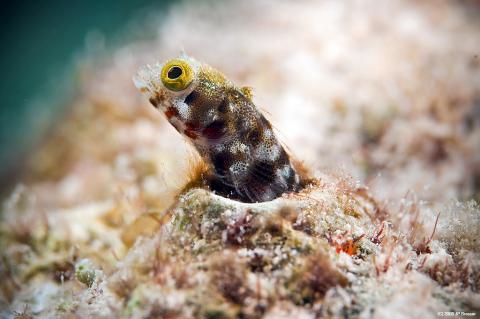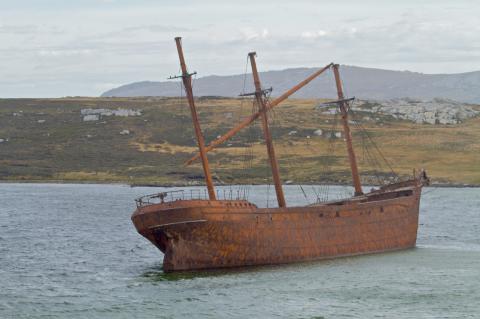X-Ray Mag #30
Bonaire Divers’ Paradise by JP Bresser :: Scott Johnson presents Turks & Caicos Islands in the Caribbean and Diving Mysteries Off North Carolina, USA :: Roddenberry Dive Team and the Star Trek Legacy :: Treasure Hunting in the Florida Keys by Millis Keegan :: Shipwreck Treasure - 17th Century Solid Gold Grooming Tool by Carol Tedesco :: Barb Roy tells us about the Reefs of Steel - Artificial Reefs of British Columbia :: Ocean Arts Emporium and 19th Century Blaschka Glass Invertebrates is edited by Gunild Symes :: Gennady Misan tells about an almost fatal dive in Lake Baikal :: Bonnie McKenna explains about Jelly fish Ecology and Tony White explains about special UW Photography Techniques :: Unique Dive site: Crystal River, Florida
Main features in this issue include:
Blaschka
This summer, Harvard Museum of Comparative Zoology in Cambridge, Massachusetts, USA, is mounting an exhibit of glass models of marine invertebrates made by the 17th century German master glassblowers, Leopold and Rudolf Blaschka of Dresden. Professor James Hanken is an evolutionary biologist and the director of the museum. He talked to X-RAY MAG about the exhibit and the Blaschka glass works.
"...they really are extraordinary specimens. They are anatomically correct, if you will; they’re made exactly to life; their colors are accurate. They’re exquisite."
— Professor James Hanken
Bonaire - A Diver's Paradise
The small island of Bonaire is part of the island group called the Dutch Caribbean and is located in the southern part of the Caribbean Sea near the coast of Venezuela. Bonaire is formed by volcanic rock about 60 million years ago and later covered with coral stone. These processes created a landscape with hills in the northwest, terraces in the middle and flatland in the south.
Because there was no gold or other precious metal on the island and because the conditions meant no agricultural possibilities, the Spanish decided not to build a colony. The local Indians were captured and brought away as slaves to work on plantations in South America. In 1526, the Spanish brought cattle to the island, which is the main reason you can encounter donkeys and goats in the wild.
British Columbia’s Reefs of Steel
I could hear a low rumble as detonated explosives echoed down long empty corridors and through multiple decks of steel. Three hundred and sixty-six feet of ship began to groan and creek while water rushed in to claim its above water existence.
It is the winter of 2009, and I have joined a few friends to make my annual inspection and photo documentation of the ship’s wondrous conversion into a thriving living reef. My husband and fellow wreck explorer, Wayne Grant, and technical dive instructor trainer, Ron Akeson, have joined me.
Crystal River
I once had a cat that approached me exactly like that. Coming right at me, top of the head first until … bump … “scratch me!” It then slowly rolled over onto its back to blissfully enjoy a good belly-rub. Only this ‘kitty’ was a 2000-pounder, with flippers instead of paws, but still, unmistakably cute and cuddly. A close encounter with the docile manatee leaves no one untouched.
Okay, so this undersigned descendant of the Vikings, who crossed the Atlantic in open boats, was a woos. I just don’t like to be cold all right? And neither do the manatees, it seems, which is why they congregate in this relatively small area of Kings Bay each year.
Diving into Mysteries Off North Carolina
As I stand on the upper deck of the Midnight Express, one of two dive boats operated by Olympus Dive Center, goose bumps cover my arms and a chill lies buried deep inside. Perhaps it is the weather or the dives awaiting me after the two hour cruise. More than likely it is both. This brisk November morning, under skies laden with dark, cumulus clouds, the seas are rough and a most ominous stage is set.
In search of answers to the mysterious sinking of U-352, the first German U-boat sunk in American waters in World War II that yielded prisoners of war and the subject of the upcoming dive, I ask George to share his considerable knowledge of the wreck and its history.
Lessons learned - A thirst for life
Not all technical dives end up successfully; unforeseen circumstances often make an elaborate dive plan go completely wrong. What will a person do when it’s a question of life or death? Give it all up and submit, or fight until the end, trying to find the way out?
Deep diving in Lake Baikal
Panning, Zooming & Rear Curtain Sync
These are special photographic techniques that have long been used for many years by both professional and amateur land photographers to add creativity to an otherwise boring shot.
Panning
In its simplest form, panning is either when the photographer is stationary and the subject is moving, or both photographer and subject are moving at the same speed. Let’s take the first one first.
Shipwreck CSI
Marine archaeology is a specialized science that combines techniques developed by land-based archaeologists, geologists and forensic specialists (to name a few).
The excavation of a shipwreck can include the recovery of very large artifacts, such as a 20-foot long anchor, along with delicate ones such as fragments of sailcloth or paper and even the remains of rodents and insects that once lived below deck.
Skookumchuck - Challenging the Rapids
Viewing a torrent of flowing liquid turmoil while safe and dry on shore is enough to make anybody hesitate about signing up for a dive charter in the Skookumchuck Narrows. This is also the place where rushing tidal currents commonly reach impressive speeds of 14-16 knots (30 km/hr)!
The word Skookumchuck comes from the Chinook language with the word skookum meaning “strong” or “powerful”, and the word chuck meaning “water”.
To Boldly Go Where....
The Star Trek Legacy goes underwater
Why Roddenberry Dive Team?
Turks & Caicos Islands
Oh yes, the sharks are circling. Can you say ‘Amen’? With an accent hinting of both Popeye the Sailorman and Quint from the movie Jaws, I call to alert my own mateys. It is my best and worst pirate imitation. But, it is appropriate. Aye, it is right as rain.
Piers Van Der Walt and his wife Annette, co-captains for this Turks & Caicos Aggressor II voyage, guaranteed something special would happen this day. They certainly delivered.












